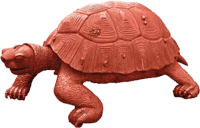Neuroinformatics in Precision Medicine: Uncovering cellular mechanisms of Alzheimer’s disease with The Virtual Brain
Ana Solodkin
Department of Anatomy & Neurobiology, University of California, Irvine, USA
The neuroscience community is immersed in the collecting of large datasets to provide greater sensitivity for understanding brain function and dysfunction. Such initiatives span normal function (Human connectome project), development (NIH pediatric Database), brain disorders such as Alzheimer’s disease (ADNI) and psychiatry (RDoC: Research Domain Criteria Project). While these initiatives provide the necessary empirical foundation, what are lacking are the quantitative tools to link these multiple datasets to “reconstruct” the brain, provide the link between these data and those from a single person (precision medicine) and to translate these approaches to the evaluation and management of neurological patients.
To achieve these quantitative goals, we take a connectivity-based multi-scale approach built on the theoretical and practical framework embodied by The Virtual Brain (TVB). TVB uses empirical neuroimaging data to create dynamic models of the human brain. The models contain the anatomical connectivity between parts of the brain and the dynamics of local neural populations. TVB uses structural MRI data to create the custom brain surface, diffusion-weighted MRI data to infer the anatomical connections between brain areas, and then functional MRI data as target to modify the parameters of the model to reproduce the observed functional data. The neuroinformatics architecture houses a library of models, which catalogues the biophysical parameters that produce different empirical brain states. These biophysical parameters are invisible to brain imaging devices, thus TVB acts as a “computational microscope” that allows the inference of internal states and processes of the system. Determining these parameters, validating them, and applying them as individualized predictive biomarkers, has enormous potential to change acute and chronic neurological care of neurological patients.
The central idea in this presentation is to demonstrate how to utilize this unifying computational framework to integrate neuroscience “big data” across multiple scales to identify general principles determining brain dynamics as they occur in Alzheimer’s disease.
In this work, we will show our current investigatigations on the impact of neurodegeneration on the structural connectome and their consistent effects in various multi-scale dynamical properties. The premise of this presentation will focus on the importance of morphing the modeling process to adapt to the particular neuropathology of disease.
Our long-term goal with this work is to develop multi-scale precision biomarker with strong biophysical grounding that can serve as the basis for personalized prognosis and/or therapeutic selection.
References
- Bezgin G, Solodkin A, Bakker R, Ritter P, McIntosh AR. 2017. Mapping complementary features of cross-species structural connectivity to construct realistic "Virtual Brains". Hum Brain Mapp 38(4):2080-2093.
- Bonthius DJ, Solodkin A, Van Hoesen GW. 2005. Pathology of the insular cortex in Alzheimer disease depends on cortical architecture. Journal of Neuropathology and Experimental Neurology 64(10):910-22.
- Falcon MI, Jirsa V, Solodkin A. 2016a. A new neuroinformatics approach to personalized medicine in neurology: The Virtual Brain. Curr Opin Neurol 29(4):429-36.
- Falcon MI, Riley JD, Jirsa V, McIntosh AR, Chen EE, Solodkin A. 2016b. Functional Mechanisms of Recovery after Chronic Stroke: Modeling with the Virtual Brain. eNeuro 3(2).
- Falcon MI, Riley JD, Jirsa V, McIntosh AR, Shereen AD, Chen EE, Solodkin A. 2015. The Virtual Brain: Modeling Biological Correlates of Recovery after Chronic Stroke. Front Neurol 6:228.
- Jirsa VK, Sporns O, Breakspear M, Deco G, McIntosh AR. 2010. Towards the virtual brain: network modeling of the intact and the damaged brain. Arch Ital Biol 148(3):189-205.
- Kruggel F, Masaki F, Solodkin A, Alzheimer's Disease Neuroimaging I. 2017. Analysis of longitudinal diffusion-weighted images in healthy and pathological aging: An ADNI study. J Neurosci Methods 278:101-115.
- Matzke H, Schirner M, Vollbrecht D, Rothmeier S, Llarena A, Rojas R, Triebkorn P, Domide L, Mersmann J, Solodkin A and others. 2015. TVB-EduPack-An Interactive Learning and Scripting Platform for The Virtual Brain. Front Neuroinform 9:27.
- Ritter P, Schirner M, McIntosh AR, Jirsa VK. 2013. The virtual brain integrates computational modeling and multimodal neuroimaging. Brain Connect 3(2):121-45.
- Sanz-Leon P, Knock SA, Spiegler A, Jirsa VK. 2015. Mathematical framework for large-scale brain network modeling in The Virtual Brain. Neuroimage.
- Solodkin A, Chen EE, Van Hoesen GW, Heimer L, Shereen A, Kruggel F, Mastrianni J. 2013. In vivo parahippocampal white matter pathology as a biomarker of disease progression to Alzheimer's disease. J Comp Neurol 521(18):4300-17.
- Solodkin A, Van Hoesen GW. 1996. Entorhinal cortex modules of the human brain. The Journal of comparative neurology 365(4):610-7.
- Solodkin A, Veldhuizen SD, Van Hoesen GW. 1996. Contingent vulnerability of entorhinal parvalbumin-containing neurons in Alzheimer's disease. The Journal of neuroscience : the official journal of the Society for Neuroscience 16(10):3311-21.
- Van Hoesen GW, Solodkin A. 1993. Some modular features of temporal cortex in humans as revealed by pathological changes in Alzheimer's disease. Cerebral Cortex 3(5):465-75.
- Van Hoesen GW, Solodkin A. 1994. Cellular and system neuroanatomical changes in Alzheimer's disease. Annals of the New York Academy of Sciences 747:12-35.
- Van Hoesen GW, Solodkin A, Hyman BT. 1995. Neuroanatomy of Alzheimer's disease: Hierarchical vulnerability and neural system compromise. Neurobiol Aging 16:278-280.
